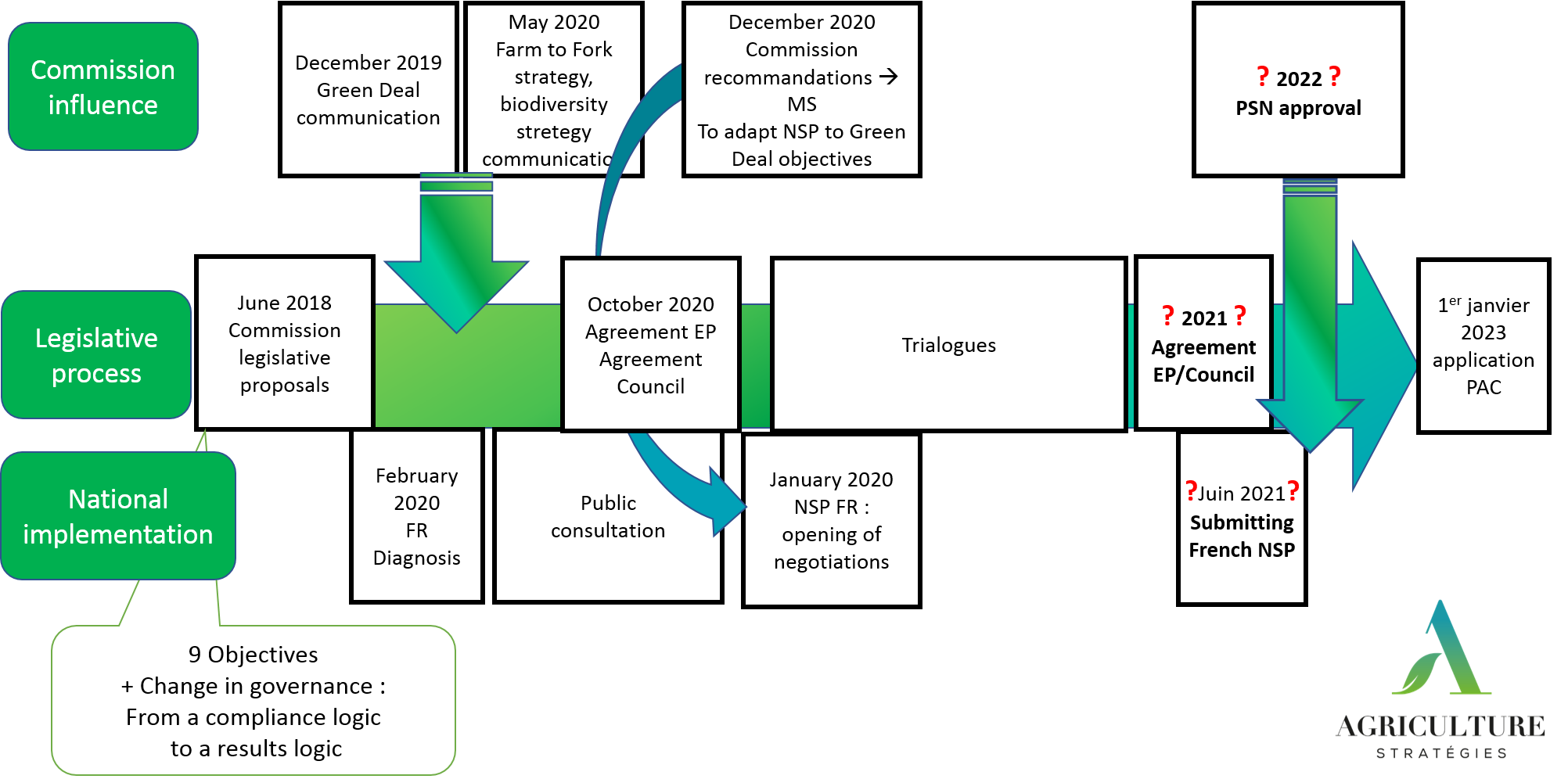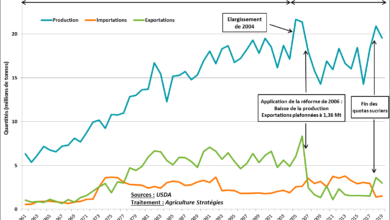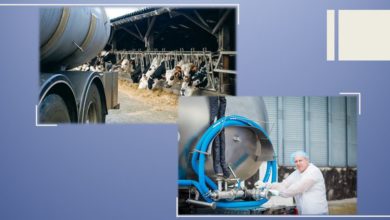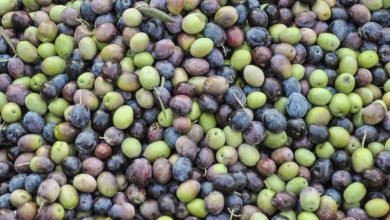
While cuts are being announced, EU Commissioner Hogan has just presented his legislative proposals for the CAP 2020. Each member state will have to establish a strategic plan in which it will associate different types of direct aids, measures to improve the organization of producers in certain sectors and the usual measures for rural development. The Commission wants each Member State to specify its objectives and to define a framework for monitoring the performance of its choices, but it does not apply these principles to itself and does not propose anything very concrete about the management of economic crises. By making too much use of subsidiarity, this proposal is a complete renationalisation of the CAP, synonymous with renunciation. As the final outcome of the reform path initiated in the 1990s, the Commission now proposes the lowest common denominator to reach an agreement before the European elections, by cheapening the main integrated Community policy. While the international context is in turmoil and the certainties of the 1990s are shattered, Europe must, on the contrary, undertake a real in-depth reform of its agricultural policy along the lines proposed by Agriculture Strategies1.
On June 1st, the European Commissioner for Agriculture unveiled the draft regulations for the CAP 2021/2027. Shortly before, the Commission had proposed a further 16% decrease in constant CAP resources for the next multiannual financial framework2. Something never seen before. The debate on the content of the next CAP thus opens up in a complicated context for a Commissioner who will have much to do to convince that the proposed reform will not result in a decline in the European ambition vis-à-vis the main integrated Community policy.
Not only is the budget in decline (nearly 30% between 2007 and 2027), but in addition we do not see the return of market regulation measures to relieve farm income affected by the crisis of international markets of agricultural raw materials for several years. This is not the case: the foundations of the trajectory initiated in the early 1990s – decoupling of aid, deregulation and alignment on international markets – are not called into question, while all the major producing countries reinforce their policies to limit their exposure to international dumping prices.
This project stands out, in addition, from the previous ones in which the Commission proposed a convergence approach each time to limit the disparities that did not fail to appear in the national choices of application. It would even be the opposite: everything is done so that the Member States see in this proposal a sufficiently flexible framework so that everyone can find something to be satisfied with and that there is the least possible asperities to be treated in the common negotiation.
The use of subsidiarity thus reaches new heights. Reference is made to the Member States to define implementing standards which are far from being specific (the definition of “real farmers” or environmental super-conditionality, for example) and to make their choices in terms of aid more consistent. farmers’ organizations or rural development instruments by formulating their “strategic plan”.
1. Content analysis
The direct aid component of strategic plans
Decoupled aid remains at the heart of the CAP. Basic income support should continue to constitute the lion’s share of the agricultural budget, even if the floor of 60% of the first pillar that appeared in the working versions finally disappeared in the final version. Always applied either via payment entitlements or per hectare aid (in the new Member States), the Member States will not have to change their payment distribution system. Same for internal convergence: the amounts of aid associated with each payment entitlement may be differentiated according to zoning (as is already the case in the United Kingdom) and will have to be harmonized only in a small proportion since in 2026, the smallest amounts will have to be at least 75% of the average and the highest will not be able to decrease by more than 30%.
The redistributive payment, which appeared during the 2013 reform (aid to the first hectares), should this time become mandatory. If this proposal tends to reflect, here too, the limits of a strict equality of aid per hectare, it will be noted however that no minimum in terms of envelope, amount or number of hectares is specified. This will therefore leave the opportunity to those Member States that so wish not to use this measure significantly.
In this new proposal, as in the previous one, there is also the possibility for the Member States to dedicate at least 2% of their budget specifically to young farmers in the form of aid per hectare not linked to production. And in the name of administrative simplification, it will also be possible to grant a flat-rate aid to small farmers on the basis of all the types of aid they could claim.
Finally, and this is the only real novelty in terms of direct aids: help for “eco-schemes” take place in the toolbox of the CAP. Optional in the first versions, the Member States would have the obligation to set up aids for farmers who choose to engage in practices beneficial to the climate and the environment, to be defined in each Member State. But again, there is no reference to any minima in terms of envelope. It is only specified that this aid will have to correspond to a level of requirement higher than environmental conditionalities and to carry out commitments different from those valid for the agro-environmental and climatic measures (AECM – contractual measures of the 2nd pillar). In addition, these aids per hectare will have to respect the rule of “additional costs and loss of profits” so as not to be considered as an indirect means of supporting income, in accordance with WTO agricultural rules, which are totally outdated.
What to think of aids to “eco-devices”?
It can be considered that the Commission wanted to put a stop to the greening of the income support introduced in 2013 which aimed to introduce strong constraints in return for aid per hectare, to somehow re-couple the subsidies to the production of environmental services. But the difficulty of establishing generic environmental criteria on the basis of an undifferentiated payment (an aid per hectare of a fixed amount decoupled from production) while the production methods and their environmental impacts are very diverse have rendered this idea is obsolete, and all the more so as the results of the first greening have not been at all up to the task3. Rather than combine different objectives on the same instrument, the Commission therefore chooses to stick to the objective of supporting farmers’ income with basic income support and adding, alongside, a new type of aid for environmental services.
But here too, the devil hides in the details and the concepts often face the wall of their non-applicability. While the Commissioner has previously emphasized the interest of switching from a logic of means to a logic of results, it must be admitted that it is very difficult to establish an indisputable link between individual practices at the scale of a farm and indicators relating to the evolution of the major compartments of the environment. For example, the evolution of the water quality of a river will depend on all the actions of the actors, and not only farmers, on the watershed.
Therefore, beyond the concept, the application of the “eco-device” does not seem very clear at this stage. One could imagine that the storage of carbon in the soil, which is measurable at the individual level, could be an example of the application of the eco-device. But on closer inspection, the rule of extra costs and shortfalls and the reduction of the CAP budget would, on the contrary, call for mobilizing the carbon market as a complementary resource. In the end, the impact assessment accompanying the legislative proposals gives an indication of what the Commission is actually considering in terms of the application of the eco-scheme: it is an aid to the maintenance of permanent grasslands. This proposal is reminiscent of the grass premium or agri-environmental grass premium, which the Commission did not look favorably, so that it had been abolished in 2013. It can also be argued that the “eco-devices” could be the appropriate vehicle for Member States wishing to shift support to the maintenance of organic farming in the first pillar. In the end, those who wanted to believe in a major break with the introduction of the “eco-device” may be disappointed.
Status quo on coupled aid and ceiling of aid
While the working versions we were able to access sometimes indicated a reduction in the room for maneuver for the coupled aid, the official proposal finally takes up the 2013 compromise: the Member States which had used the derogations to increase to 15% their coupled aid rates (of which 2% for protein-rich crops) or more, may continue to do so within the limit of the percentage approved by the Commission for 2018. This stability is only apparent, because the announced budget of the CAP will necessarily result in a decrease in the available envelope4. In these circumstances, one wonders what the Commission will be able to announce in the new ‘protein plan’ planned for the coming weeks. The draft “Strategic Plans” Regulation contains in its article 33, in great detail, the main constraints accepted by Europe in 1993 in terms of support for oil-protein crops vis-à-vis the United States. More than 25 years later, it is surprising, to say the least, that the Commission continues to be so rigourous about the “Memorandum of Understanding”, considered obsolete5.
Finally, as with every reform proposal since 1992, the Commission plans to introduce a degressivity in the payment of aid. Apart from redistributive payment, mandatory but without floor, it is proposed that the amount of aid per farm is reduced above € 60 000 and capped at a maximum of € 100 000, with however the obligation to deduct the cost of labor (wages and equivalent for family employment). According to the first analysis of these rules, this ceiling would have almost no effect6 and is mainly a display.
“Sectorial interventions”
In addition to direct aid, each member state will have to incorporate “sectoral interventions” into its strategic plan. In broad outline, this is to continue what is done in the fruit and vegetable or viticulture sector, but also for beekeeping, hops or olive oil, where producers are encouraged to collectively organize themselves into producer organizations (POs) – most often cooperatives – to invest jointly and control their marketing. The novelty of this reform would be to be able to extend this intervention logic to other sectors at the discretion of the Member States. In France, it would not be absurd for the dairy sector to be concerned given its organizational handicaps.
Concretely, the Member States will have to choose among the numerous types of instrument that the producer organizations will have to integrate in the operational program which they will have to submit for validation, then to implement for a duration between 3 and 7 years. From the protection of natural resources to the prevention of market crises, including R & D and supply management, the objectives are numerous.
Unfortunately, the means do not seem at all up to the task. Public support to these operational funds will be equal to producer contributions, up to a limit of 50% of actual expenditures and up to 5% of the commercial value of PO products, which corresponds to current orders of magnitude for producers. fruits and vegetables in particular. But, the draft regulation provides that only 3% of the total envelope of the first pillar can be devoted to these sectoral approaches!
In addition to scarce budgetary resources, we can only notice the gap between the objectives and the instruments. While it is globally relevant to improve the collective organization of producers, in particular by encouraging them to control their production in order to adjust to demand, the sectors currently affected by this sectoral intervention logic are rather little subject to competition. primarily because of product perishability or differentiation strategies. However, by extending sectoral interventions to commodities subject to international market prices, it is clear that the linkage between these private modes of regulation and existing or imagined public intervention tools is indispensable. But nothing is in the Commission proposal.
Crisis management: Hogan forgets the keystone of any agricultural policy
This is where the shoe rubs the most. Member States are asked to define a strategy to support farmers’ incomes, and producer organizations to prevent crises by developing private regulations. But the Commission makes no proposal as to its role in case of market crises. However, maintaining the integrity of the European internal market can only come from the Community level and must even be seen as a safeguard against the renationalisation of the CAP. Moreover, it is rather paradoxical that the Commission is asking the Member States to establish indicators and targets to be achieved in order to bring the CAP into the logic inspired by the New Public Management, but does not apply it to itself! There is, however, a significant interest in the Commission, in a virtuous dialogue with the Council and the Parliament, establishing its own strategy for using market intervention tools so as to use budget resources advisedly. This is undeniably the proof that the Commission is organizing the retreat to Member States of the main common policy.
Thus, in terms of crisis management, the only novelty is the extension of the possibilities of using the crisis reserve, now called “agricultural reserve” which will provide additional support “with the objective of market management or stabilization or in the case of crises affecting agricultural production or distribution”. Recall that the crisis reserve wanted by Commissioner Ciolos during the 2013 reform has so far not been used by his successor. In the proposed new version, the reserve will finance measures falling under Articles 8 to 21 of the CMO – which remains as they are – (public purchase and private storage) as well as the crisis measures of Articles 219, 220 and 221 which give the Commission a wide range of action7. The annual budget allocated to the crisis reserve would be “at least 400 million euros in current prices”. Above all, uncommitted sums will have to be carried over from one year to the next, and thus kept in the fund, without any limitation in time, including the year 2020.
The rural development component of strategic plans
Finally, the third component of the strategic plans is based on the usual intervention methods of the second pillar of the CAP. The Agro-Environmental and Climatic Measures (AECM), voluntary and contractual, remain unchanged, they must benefit from at least 30% of funds of the second pillar. The local action funding program EAFRD will have to benefit from at least 5% of second-pillar funds. There is also investment aid whose co-financing can be increased up to 75% of the cost of investments. The ceiling for installation aids for young farmers is increased to € 100,000. These ceilings are high enough not to constrain member states, which will be limited mainly by their ability to finance these measures given declining national envelopes. Thus the possibilities of transfers from the 1st to the 2nd pillar are raised to 15%, as also the possibilities of transfers from the 2nd pillar to the 1st pillar, proof if any of the configurations are possible.
For the financing of private risk management tools (insurance and mutual funds), there is little change compared to the latest changes made by the Omnibus regulation at the end of 2017. Coverage must concern production or income losses greater than 20% and the maximum public support rate is 70% of the eligible costs. In addition to ensuring that there is no overcompensation resulting from the crossing with other public or private schemes, the Member States will have to establish the conditions of eligibility, constitution and management of mutual funds, which will not be easy. In the end, as in 2013, Member States have the possibility to support the development of insurance and mutual funds, but there is no new evidence that would suggest a real development of these tools for market risks, which, it should be remembered, are of very little effectiveness when prices do not fluctuate regularly around production costs8.
Finally, in view of the difficulties surrounding the validation by the Commission of the French programs including the compensatory allowance for natural handicap (ICHN) during the previous programming, the Commission seems to want to bury the hatchet because unlike 2013, it does not foresee tipping this support into the 1st pillar. The proposal also refers to the zoning of the current programming, zoning which is being stabilized not smoothly.
2. The overall assessment
The comprehensive review of the Commission’s proposals for the post-2020 CAP highlights a negotiating strategy in which the aim is to propose the most flexible framework possible to the Member States to hope for their speedy agreement, while not yielding anything to the the heart of the trajectory at work since the early 1990s: decoupling aid, deregulation and alignment on international prices. If it is calibrated to allow a Commissioner to complete “his” reform within a very short time before the end of the term of office (and presumably the hope of applying for his own succession), this “lowest common denominator” strategy is attractive for the members of the European Council9.
While waiting for the Treaty of Lisbon to have a say on agricultural issues, the European Parliament would be marginalized because it will have no place in the negotiations on the validation by the Commission of national strategic plans. The same is true for Regions, Landerns, Autonomias and other sub-national authorities, which had become 2nd pillar management authorities but whose role in defining national strategic plans is not defined at all. This is another facet of the “renationalisation” of the CAP, there would be recentralisation of the management of certain funds.
Admittedly, it can always be argued that the strategic plans will have to be validated by the Commission to challenge the idea of a renationalisation of the CAP and the loss of its “C”. In addition, the monitoring of the realization of the plans via indicators and target values or the possibility of benefiting from a performance bonus of 5% in the event that environmental and climatic objectives are achieved in 2026 could be the means to true ambition for this new CAP.
But how can it be imagined that the Commission can have the possibility of avoiding a race to the bottom of strategic plans in that it will not be able to forge its political legitimacy on the result of a negotiation in which all the subjects who could potentially be controversial will have been postponed. In addition, how can we achieve a real ambition on the environmental front if, moreover, nothing is done to protect European producers from a race for competitiveness in international dumping markets where environmental standards is only synonymous with additional costs? ?
It should not be mistaken, therefore, that this reform project resorts so excessively to the principle of subsidiarity that it constitutes a real deviation by sending back to the national level responsibilities that Member States can not take. Without a desire to harmonize, we are in the process of institutionalizing regulatory competition between Member States and the associated distortions within the common market. This is yet another step towards a renationalisation of the main integrated Community policy, by abdicating European political power that would not want to put back twenty-five years of reform that will have made the CAP ineffective.
By reducing the CAP to its redistributive dimension, the Commission itself has set itself the trap in which it fell, that of the loss of confidence in the ability of the European institutions to make what the Member States wanted to in terms of food sovereignty and defense of the agricultural world. Believing that by giving up its responsibilities on the CAP, the Commission will be able to do better on other issues (migration, defense, etc.) is, moreover, totally illusory.
In these circumstances it is unlikely and absolutely undesirable for this reform project to succeed before the European elections and the renewal of the Commission. And given the international context in which the certainty of an international order built in the 1990s is shattering, it is time for Europe to undertake an in-depth reform of the CAP, which will have to to get rid of the agricultural rules of the WTO in 1994. This in-depth reform, of which Agriculture Strategies has just defined the outline, will give Europe the opportunity to redefine its position in favor of a new multilateralism. As for the great reform of 1993, it is from the international pressure and from the observation of the inefficiency of the domestic policy that a new trajectory of reforms will be born.
Jacques Carles, Président of Agriculture Strategies
Frédéric Courleux, Director of studies of Agriculture Strategies
1 See the Strategic Reference Note
2 See the analysis we make of this proposal : https://www.agriculture-strategies.eu/2018/06/les-vrais-chiffres-de-la-baisse-du-budget-de-la-pac-ue27/
3 For a complete analysis from the European Court of Auditors : https://www.agriculture-strategies.eu/2018/03/la-cour-des-comptes-europeenne-juge-severement-lefficacite-des-aides-decouplees-et-du-verdissement/
4 It must be noted that 20 countries and Scotland decided to use the maximum level of coupled aid. Voir : https://www.agriculture-strategies.eu/2018/01/application-de-la-pac-2014-le-retour-en-grace-des-aides-couplees/
5 By the Commission itself in 2011, cf : https://ec.europa.eu/agriculture/sites/agriculture/files/cereals/factsheet-oilseeds-protein-crops_en.pdf
6 See Allan Matthews’ analysis http://capreform.eu/why-capping-will-be-a-mirage/
7 It is article 219 that had been the basis for the production reduction scheme that was succesfully implemented in 2016.
8 See a complete analysis : https://www.agriculture-strategies.eu/2018/01/les-marches-a-terme-et-les-assurances-revenus-ne-sont-pas-des-substituts-aux-regulations-publiques/
9 France has, for there part, already announced through their Minister for European Affairs that no deal was possible on the budget before the european elections and that decisions would be postponed until the next Parliament is elected http://www.rtl.fr/actu/politique/nathalie-loiseau-est-l-invitee-de-rtl-7793639997












